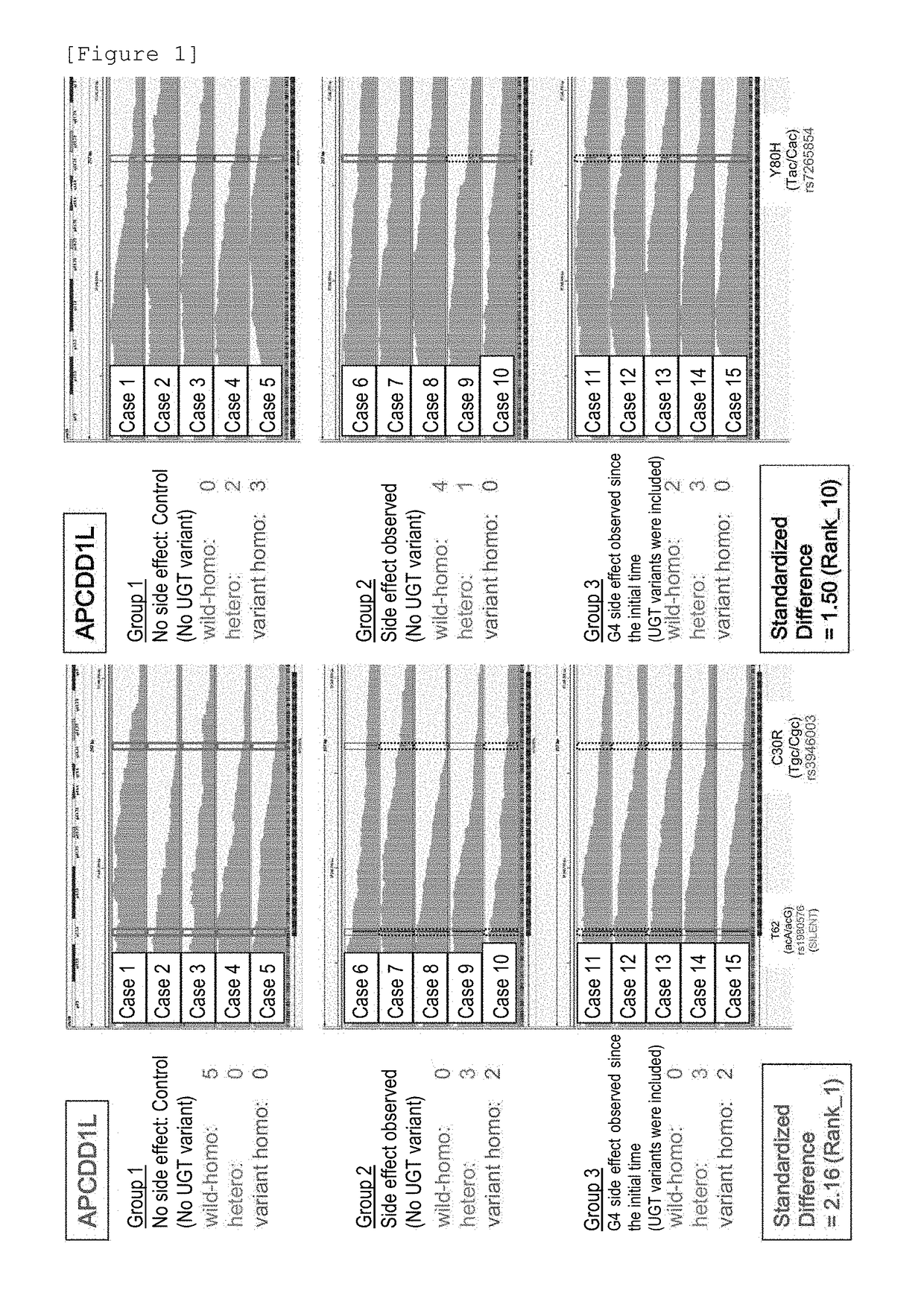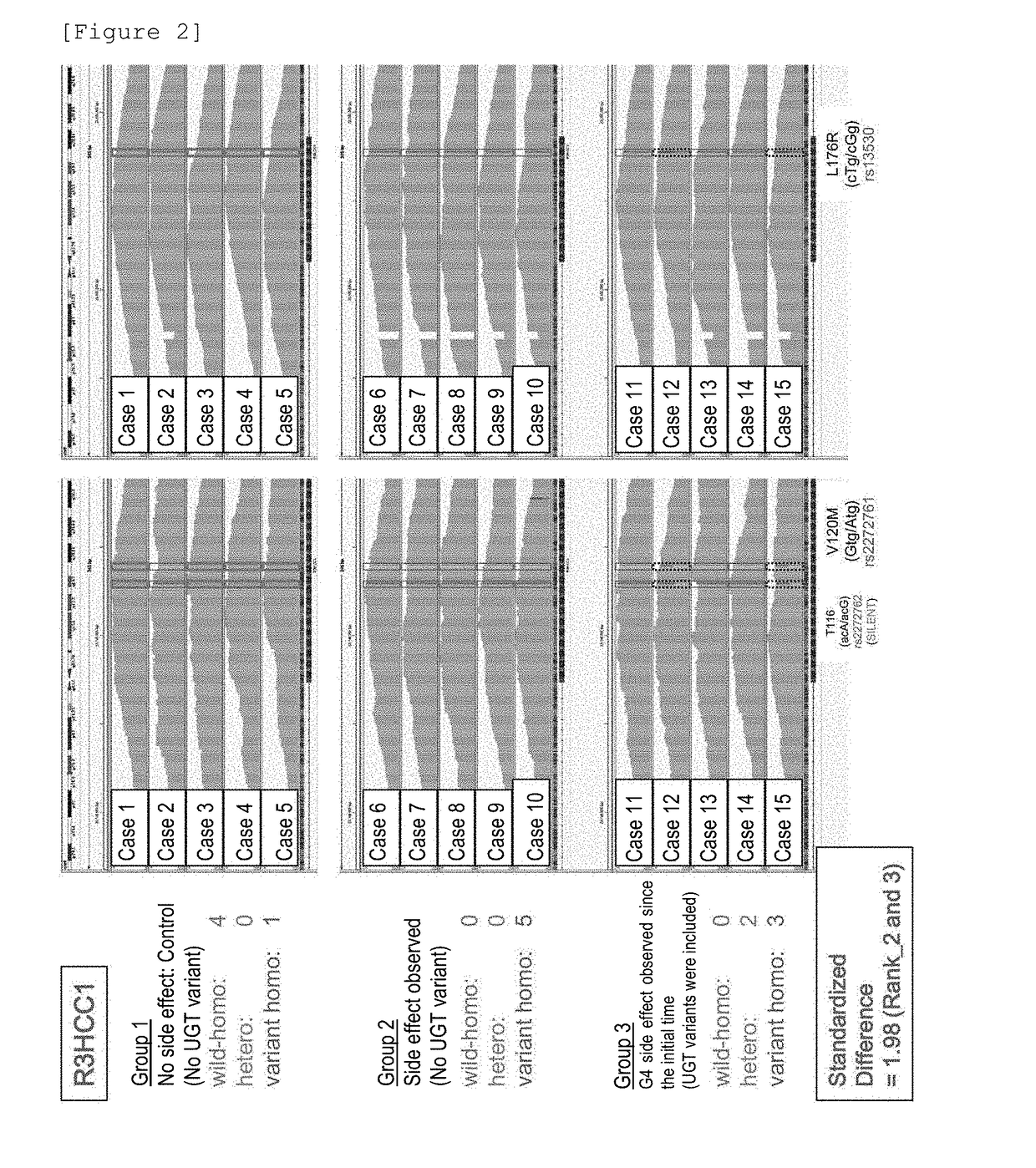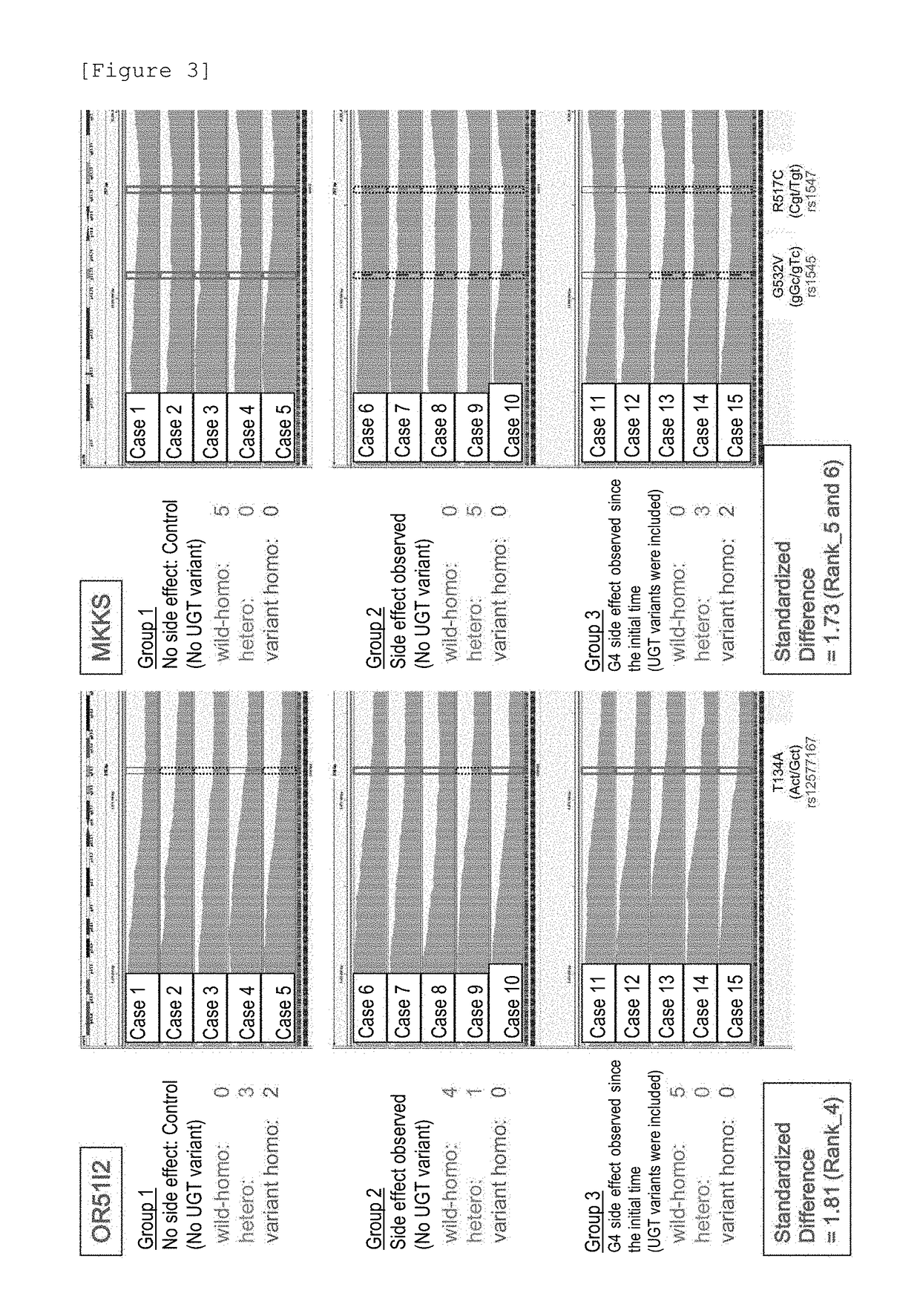Method for assisting prediction of risk of occurrence of side effect of irinotecan
a technology of irinotecan and side effects, which is applied in the field of assisting prediction of the risk of occurrence of the side effect of irinotecan, can solve problems such as reported effects
- Summary
- Abstract
- Description
- Claims
- Application Information
AI Technical Summary
Benefits of technology
Problems solved by technology
Method used
Image
Examples
example 1
[Search for an Irinotecan-Side-Effect-Related Factor]
[0092]A serious side effect of irinotecan can be sometimes observed even in patients without any UGT1A gene polymorphism (at 7 sites including UGT1A1*6, *27, *28, UGT1A7 (387T>G, 622T>C), UGT1A9*1b, UGT1A1*60) related to the side effect. Here, the following method was used to search for a novel irinotecan-side-effect-related factor.
(Subjects Analyzed)
[0093]A next-generation sequencer was used to perform exome analysis by using genomic DNA prepared from peripheral blood of: a case group (Group 1; n=5), as a control group, in which all the above-mentioned 7 different polymorphisms were genotypes having a low risk of the side effect and no side effect was observed; a case group (Group 2; n=5) in which all the 7 different polymorphisms of the above UGT1A gene were genotypes having a low risk of the side effect, but the side effect (Grade 3: leucopenia, neutropenia) was observed; and a case group (Group 3; n=5) being heterozygous for a...
example 2
[Examining Results of Exome Analysis]
(Methodology for Examining Results of Exome Analysis)
[0098]By using a TaqMan® probe method, clinical samples from 75 Japanese patients with colon cancer who had received irinotecan were further examined with respect to: among the candidates for irinotecan-side-effect-related factor as obtained from the results of Example 1, a single nucleotide polymorphism rs1980576 in a region encoding the APCDD1L gene; a single nucleotide polymorphism rs2272761 in a region encoding the R3HCC1 gene; a single nucleotide polymorphism rs12577167 in a region encoding the OR5112 gene; a single nucleotide polymorphism rs1547 in a region encoding the MKKS gene; a single nucleotide polymorphism rs9425343 in a region encoding the EDEM3 gene; a single nucleotide polymorphism rs7265854 in a region encoding the APCDD1L gene; and a single nucleotide polymorphism rs1135640 in a region encoding the ACOX1 gene. By using TaqMan SNP Assays Human (manufactured by Applied Biosystem...
example 3
[Linkage to UGT1A Gene Mutations]
[0100]Regarding the 74 cases in Example 2, the TaqMan probe method and direct sequencing were used to determine the genotype of each of the UGT genes, namely UGT1A gene polymorphisms including UGT1A9*1b, UGT1A7 [387], UGT1A7 [622], UGT1A1*60, UGT1A1*28, UGT1A1*6 and UGT1A1*27, as well as to determine the genotype of rs9425343, rs2272761, rs12577167, rs1135640, rs1547, rs7265854, or rs1980576. Further, linkage disequilibrium analysis and LD analysis were conducted using Haploview 4.2 software. The results are shown in FIG. 10. In FIG. 10, the numbers indicate correlation coefficients (r2). As shown in FIG. 10, the UGT1A gene polymorphisms were not linked to (associated with) rs9425343, rs2272761, rs12577167, rs1135640, rs1547, rs7265854, or rs1980576. In addition, no linkage was observed among rs9425343, rs2272761, rs12577167, rs1135640, rs1547, rs7265854, and rs1980576. This clearly demonstrated that these single nucleotide polymorphisms (marker site...
PUM
| Property | Measurement | Unit |
|---|---|---|
| Volume | aaaaa | aaaaa |
| Volume | aaaaa | aaaaa |
| Volume | aaaaa | aaaaa |
Abstract
Description
Claims
Application Information
 Login to View More
Login to View More - R&D
- Intellectual Property
- Life Sciences
- Materials
- Tech Scout
- Unparalleled Data Quality
- Higher Quality Content
- 60% Fewer Hallucinations
Browse by: Latest US Patents, China's latest patents, Technical Efficacy Thesaurus, Application Domain, Technology Topic, Popular Technical Reports.
© 2025 PatSnap. All rights reserved.Legal|Privacy policy|Modern Slavery Act Transparency Statement|Sitemap|About US| Contact US: help@patsnap.com



